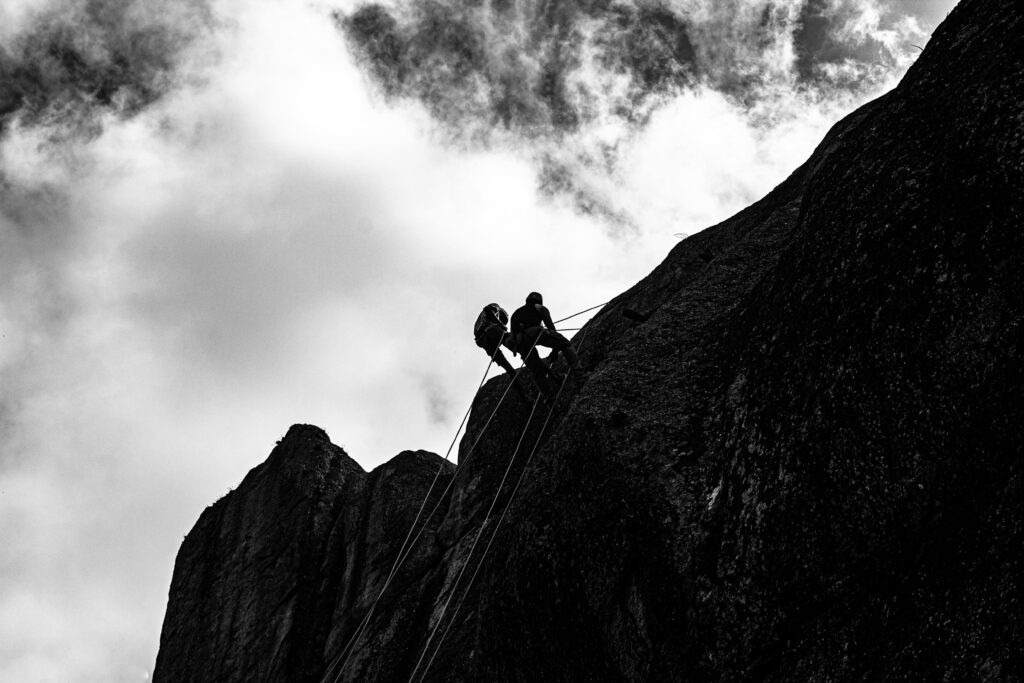/
The Origins of Sport Climbing
Sport climbing emerged in the 1970s and 1980s as a response to the growing desire for more challenging and dynamic climbing experiences. Unlike traditional climbing, which relies on placing and removing protective gear, sport climbing introduced the concept of pre-installed bolts on rock faces, allowing climbers to focus solely on movement and technique.
- Key Locations: Early sport climbing hotspots included Verdon Gorge in France, Frankenjura in Germany, and Smith Rock in the United States.
- Influential Figures: Climbers like Wolfgang Güllich, Patrick Edlinger, and Alan Watts pioneered bold new routes and set the standard for difficulty.
The 1980s: A Decade of Innovation
The 1980s were transformative for sport climbing, as advancements in gear and climbing techniques propelled the sport forward.
- New Grading Standards: The French grading system gained popularity, offering a consistent way to measure route difficulty.
- Iconic Ascents:
- Wolfgang Güllich’s ascent of “Action Directe” in Frankenjura (1991) set a new benchmark for difficulty at 9a (5.14d).
- Patrick Edlinger’s mastery of routes in Verdon Gorge showcased the artistry of climbing.
- Indoor Climbing: The first indoor climbing gyms appeared, providing climbers with year-round training facilities and introducing the sport to urban populations.
The 1990s: The Birth of Competitive Climbing
Sport climbing gained traction as a competitive discipline during the 1990s.
- World Cup Events: The International Federation of Sport Climbing (IFSC) began organizing World Cup competitions, drawing climbers from across the globe.
- Women in Sport Climbing: Female climbers like Lynn Hill shattered barriers, with Hill’s historic free ascent of “The Nose” on El Capitan demonstrating the capabilities of women in climbing.
- Advancements in Gear: Lightweight harnesses, stick clips, and improved climbing shoes made sport climbing safer and more accessible.
The 2000s: Sport Climbing Goes Global
As climbing gyms proliferated, sport climbing became more accessible to beginners, leading to a surge in global popularity.
- Climbing Media: Films like “Dosage” and “The Reel Rock Tour” inspired a new generation of climbers.
- Harder Routes: Climbers like Chris Sharma and Adam Ondra pushed boundaries with groundbreaking ascents of routes like “La Dura Dura” (9b+).
- Diverse Climbing Communities: Climbing spread to regions like Asia and South America, diversifying the global climbing scene.
The 2010s: Olympic Dreams and Recognition
The 2010s marked a turning point as sport climbing achieved mainstream recognition.
- Olympic Inclusion: In 2016, sport climbing was officially added to the Olympic Games, debuting in Tokyo 2020.
- Rise of Indoor Climbing: The number of climbing gyms skyrocketed, catering to urban climbers and families.
- Record-Breaking Climbers: Adam Ondra’s “Silence” (9c) in 2017 became the hardest route in the world.
Sport Climbing Today: 2025 and Beyond
In 2025, sport climbing continues to grow, driven by innovations in technology, sustainability, and inclusivity.
- Technology: Augmented reality climbing walls and data-driven training methods are enhancing performance.
- Sustainability: Eco-friendly climbing gear and efforts to minimize environmental impact are shaping the sport.
- Community Growth: Climbing remains a unifying activity, fostering connections across cultures and age groups.
Final Thoughts
The history of sport climbing is a story of innovation, passion, and community. From its roots in the cliffs of Europe to its presence on the Olympic stage, sport climbing has continually evolved, inspiring climbers to push their limits and redefine what’s possible. Whether you’re a beginner or a seasoned pro, every ascent contributes to this rich legacy.


Pingback: Sport Climbing Combined Olympics - gearyourgrip